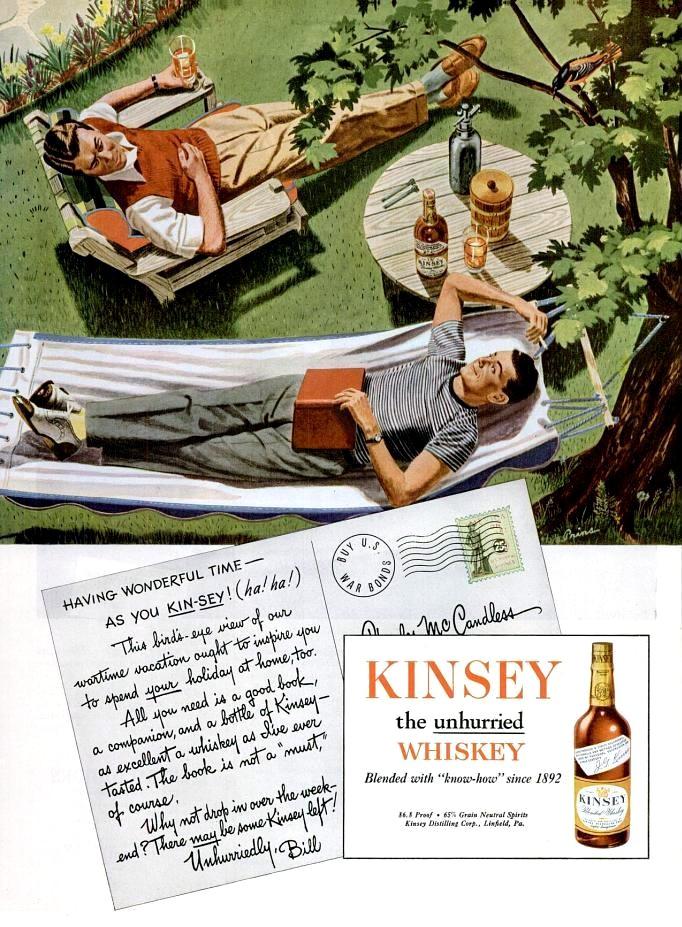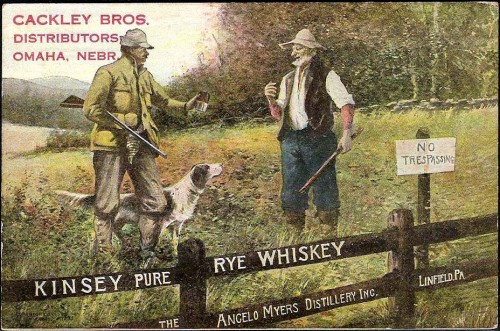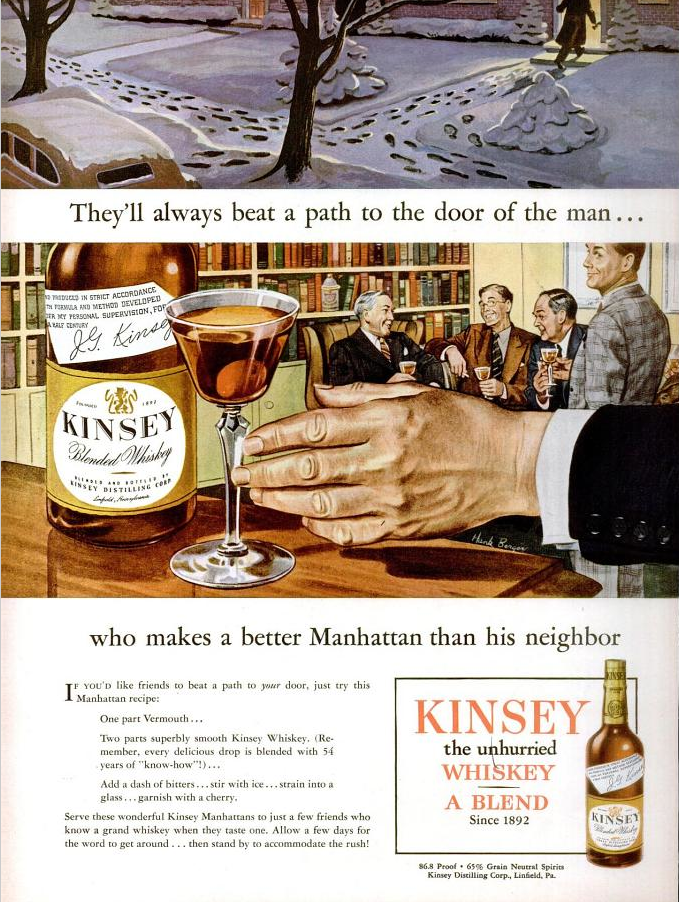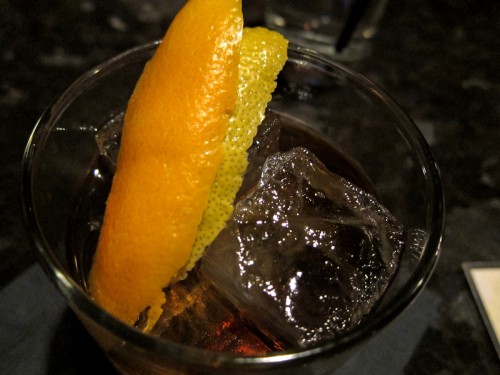Vintage Whiskey Ad of the Day
Via my old friend Chris, via the Vintage Ads LiveJournal:
Chris adds, “I’d read significance into this ad and the brand, were it not published three years before the Kinsey Report.” Doug adds, “So what’s that book concealing?” Heh. (Come to think of it, The Kinsey Report might be a great name for a cocktail. I’ll have to come up with something.)
I was curious about not only the advertising but the whiskey behind it, so I did some further digging. It seems that’s not the only Kinsey Whiskey ad I’ve come across that’s had an element of … er, camp to it. This ad is from Christian Montone‘s vintage ad collection on Flickr:
Um …
The whiskey does indeed date back to 1892, and was produced at a quite lovely distillery on the banks of the Schuykill River near Linfield, Pennsylvania. Taking a break (of course) during Prohibition, the stuff was produced until the mid-1980s, although I don’t ever recall seeing it; it must have been primarily an East Coast brand.
Notice the fine print in the ads, which says that Kinsey Whiskey is “65% grain neutral spirits,” i.e. vodka. That’s even higher than the 55% grain neutral spirit content of the spectacularly uninteresting Seagram’s 7 Crown, which along with its slightly less dull sibling Seagram’s V.O. was quite accurately referred to by my friend Darcy O’Neil as “brown vodka.” “Light whiskey … for pleasant taste” was one of their ad slogans, and I imagine it was fairly accurate. This particular “Gold Label” blend was a fairly typical example of blended American whiskies produced after World War II, when supplies were limited and could be stretched by the addition of column still-produced grain neutral spirits. Of course I’ve never tasted Kinsey Gold Label, but I imagine the adjective I’d use to describe it would be the same ones I use to describe 7 Crown and V.O. — “bland.”
However, according to this excellent article they also made a bonded rye whiskey as well:
Now THAT would have been something to try. Fortunately we have our beloved Rittenhouse bonded rye to cuddle and quaff these days, but sadly we don’t have much in the way of bonded ryes these days to compare it to.
Here are a couple more ads:
Oh sure, he’s showing them a football play, but had this ad been 1965 and not 1945 I’m sure he would have been showing his buddies how fabulously he can sing “Stop In The Name of Love.”
As you may have noticed, Kinsey (as did many if not most liquor producers of the time) put out a cocktail booklet. The whiskey itself might have been nothing to write home about, but they sure knew what to do with it still, even as late as circa 1950 when this booklet came out:
It’s sad to say that these days it would likely take what’s at the moment being called a “craft bartender” to even know what a Daisy, Flip or Sling is, and if you ordered a Whiskey Sour in most bars these days you probably wouldn’t get fresh squeezed lemon, but some artificial “sour mix” crap out of a jug. This is slowly but surely changing, especially in higher-end bars and restaurant, but please … can we at least get things back to 1950, if not 1920 and earlier just yet?
Flickr vintage ad collector alsis35 adds, “You have to wonder: Why did drunks need number puzzles to play with? Maybe they took away the darts after somebody lost an eye.” Heh.
I think this one is my favorite Kinsey Whiskey ad of all, though. From the January 14, 1946 issue of LIFE Magazine:
That slogan speaks the truth. To accompany their regular meeting of the He-Man Woman Haters’ Club, at least these fellows know how to mix a cocktail. Perfect recipe, perfect glassware. Of course, I’m sure it’d be a much better Manhattan with Kinsey’s 100 proof bonded rye product — one made with such a blend containing so much grain neutral spirits would be limp and limpid at best, with barely a whisper of whiskey flavor — although I don’t know if Kinsey was still making it at this point.
Thanks to Chris Gaal for inspiring this post! Incidentally, Chris’ blog is well worth following, full of interesting tidbits of Los Angeles, Glendale and Pasadena history and photos. The Vintage Ads LJ is also a regular hoot too — the mind boggles at what admen used to think would sell products.













